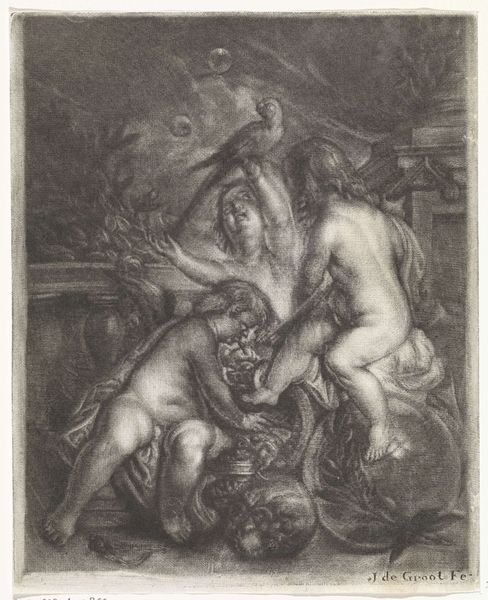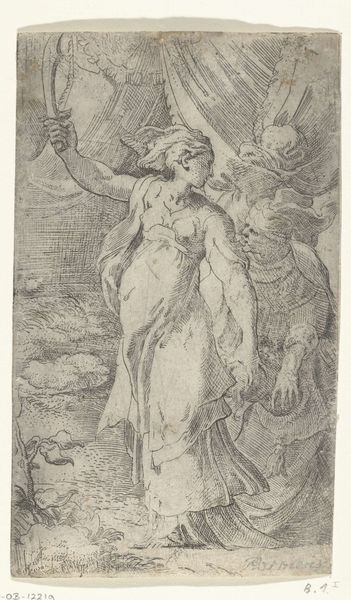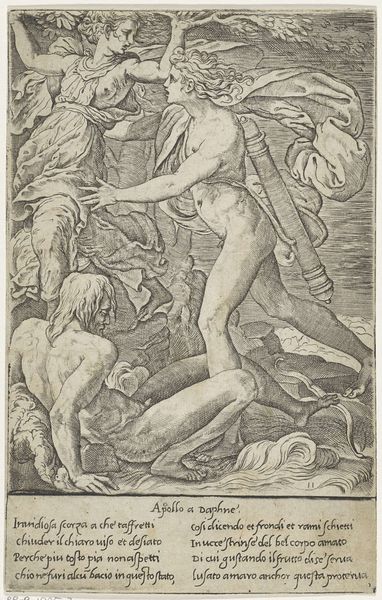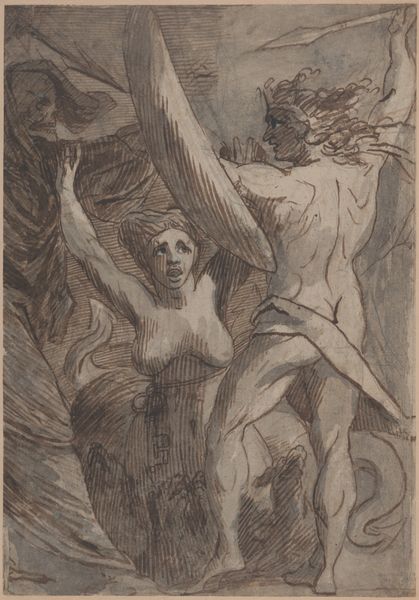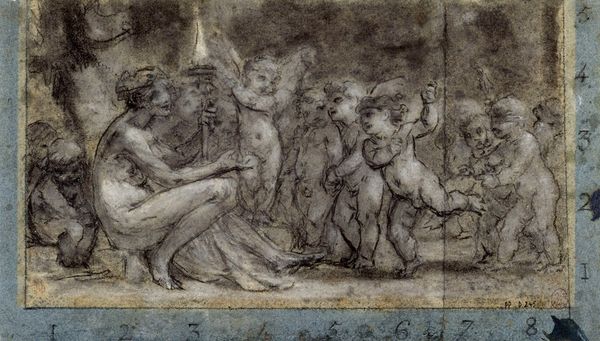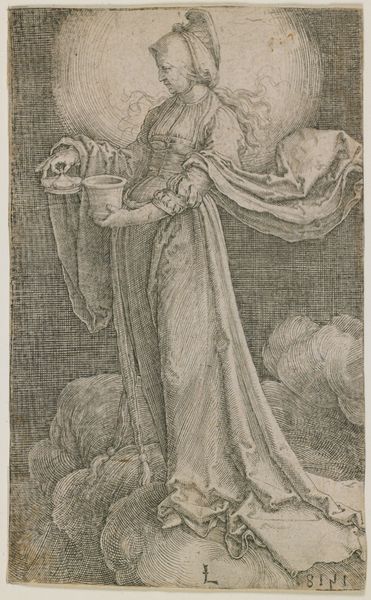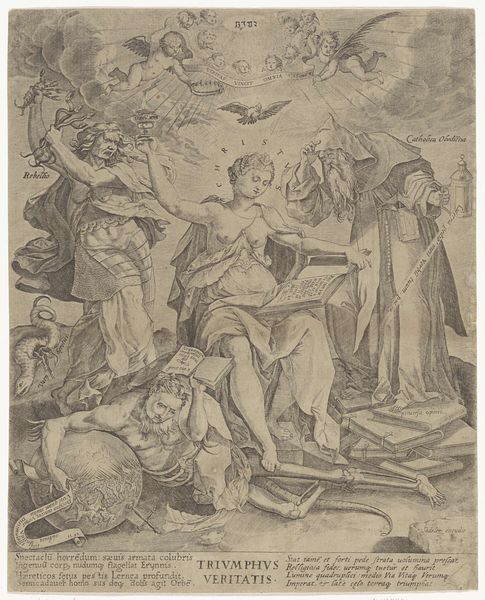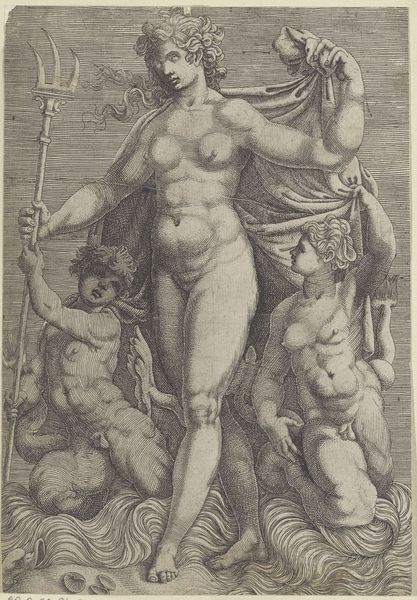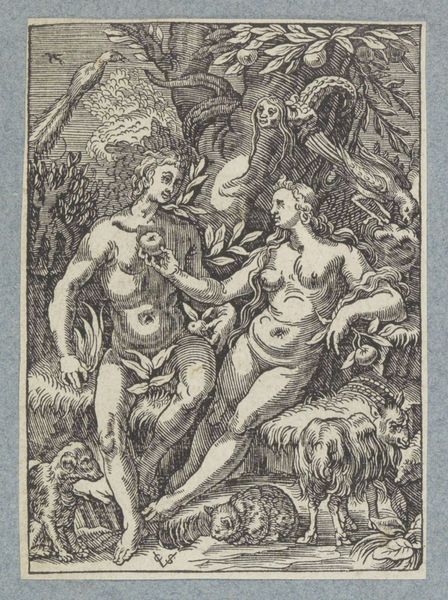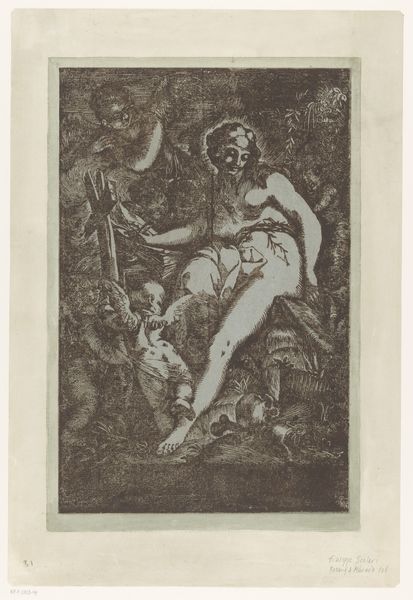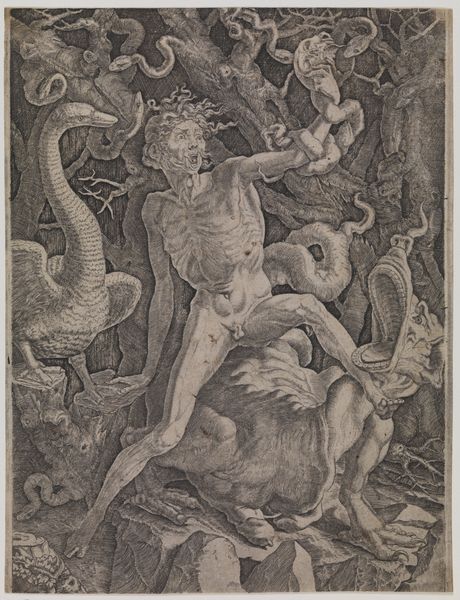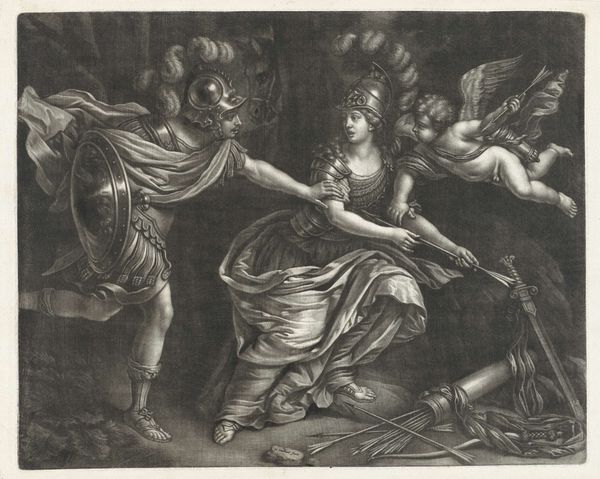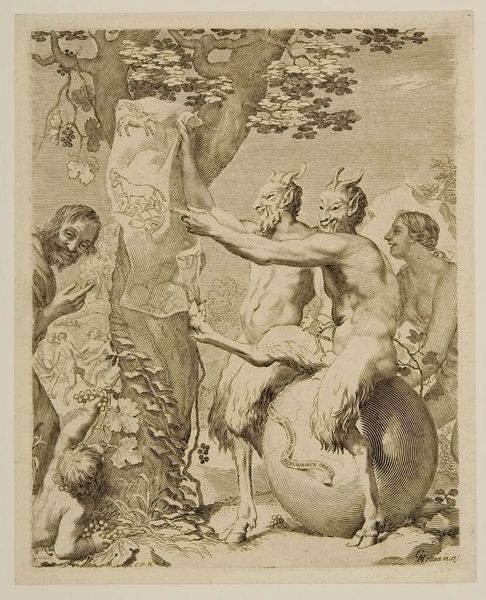
Dimensions: support: 380 x 266 mm frame: 473 x 360 x 48 mm
Copyright: NaN
Editor: Here we see William Blake’s “Moses Indignant at the Golden Calf.” The monochromatic painting depicts Moses towering over figures who seem to be worshipping a golden calf. What do you make of Blake's choices in depicting this scene? Curator: Blake uses this biblical scene to critique power structures and the dangers of idolatry, even of seemingly righteous figures. Moses’s rage could be seen as a form of oppression itself, mirroring the very thing he condemns. What does the calf represent in our contemporary moment? Editor: So, it’s about questioning authority, even when it appears divinely sanctioned? Curator: Precisely. Blake encourages us to think critically about who holds power and how it's wielded, urging us to examine the idols we create, be they political, social, or personal. Editor: I see. It makes the image feel much more relevant today.
Comments
tate 6 months ago
⋮
http://www.tate.org.uk/art/artworks/blake-moses-indignant-at-the-golden-calf-t04134
Join the conversation
Join millions of artists and users on Artera today and experience the ultimate creative platform.
tate 6 months ago
⋮
This painting illustrates a scene in the Old Testament book Exodus. Moses was called by God to Mount Sinai to receive the Ten Commandments, written on two slabs of stone. One Commandment was 'Thou shalt have no other gods before me'. However, in Moses's absence, the Israelites were worshipping a statue of a golden calf. When Moses saw this he broke the stone slabs in fury. In Blake's own mythology, a character named Urizen makes iron laws to repress Man. Blake links Urizen with God and Moses who made the laws of organised religion, which Blake wanted to see destroyed. Gallery label, August 2004
